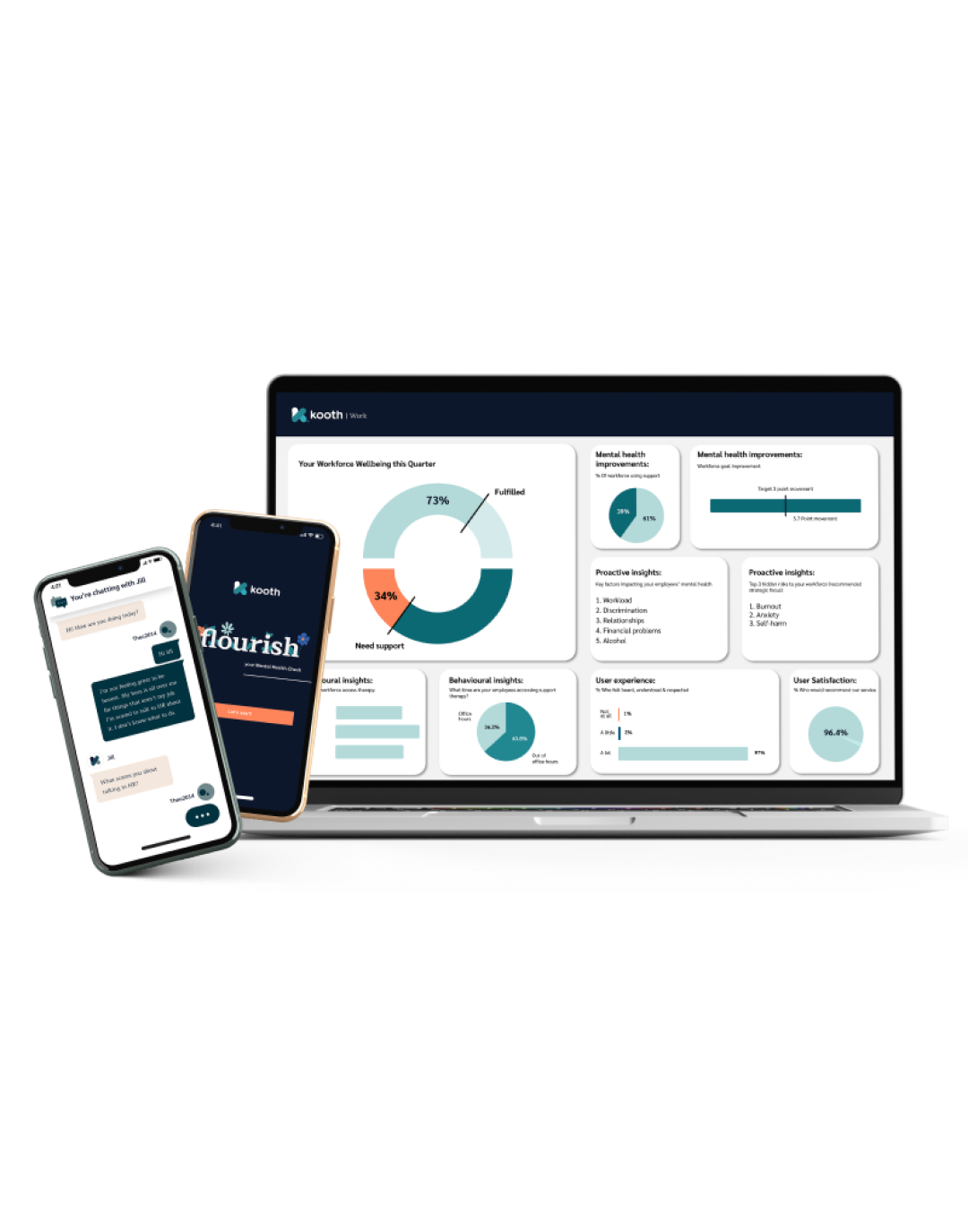It’s long been established that employee wellbeing is a predictor of better business performance. Workforces where wellbeing is prioritised show increased resilience, reduced absenteeism and turnover, higher engagement, and more productive and communicative teams.
HR teams have a big responsibility in championing this employee wellbeing and ingraining it within the workplace, whether it be through mitigating workplace stressors, training leaders, designing safe policies, creating a psychologically safe culture, or providing employee support options.
To understate it, the last few years have been challenging both professionally and personally. We’ve experienced multiple lockdowns and global uncertainty; many employees have been through grief, trauma, and illness. Add to this ever changing ways of working, political and societal division, protests, record breaking job vacancies and resignations, resource shortages, and a lack of social interaction, and it’s unsurprising that we also have high rates of burnout and stress.
Lots of us are feeling it: levels of stress, loneliness, and substance misuse are at an all time high, and the number of adults diagnosed with depression has more than doubled since before the pandemic (Office for National Statistics, 2021).
Whilst many factors are out of the hands of employers, the effects are something that cannot be overlooked. Employee wellbeing has become a pivotal focus for HR teams, and many are feeling the pressure to “get it right”. But how much support is enough? Where do you draw the line? How do you strike a balance between being supporting and adaptive without overstepping boundaries?
We asked Dr Hannah Wilson, Head of Clinical Governance and Clinical Psychology Lead at Kooth, how far HR leaders should be going to promote and address employee wellbeing.
Be aware of the boundaries
Know your limitations
Even though HR leaders are responsible for advocating for employee wellbeing, there is no expectation for them to be a trained mental health professional; it’s important to acknowledge your limitations when it comes to giving advice.
Dr Wilson: “The boundary between what should be the responsibility of HR teams and what needs to be signposted out to a professional is often blurry. It is, however, important for people to acknowledge their own limitations and knowledge. As an HR team member if you’re finding it tough to know what to say or how to have the conversation, consider signposting an employee to someone else in the team, who perhaps has mental health training, or to a mental health professional.”
It is still, however, important to acknowledge someone is finding things difficult and to be transparent. Letting a member of staff know you want to get them the best support and that you will find someone more able to help is far better than offering advice if you are uncertain - which could, in some cases, be harmful.
According to Dr Wilson, “It’s far better to be supportive, but upfront about your boundaries, checking in at a later date to ensure they got the necessary help.”
Know your responsibilities
As well as knowing when to signpost, think about when something is your responsibility as an employer, and when it’s not.
Dr Wilson: “It isn’t the job of HR or line managers to be doing a full mental health assessment. I’d be encouraging people to only ask about what is relevant to the role. For example, if I was managing someone who was a driver, and they were describing spells of feeling excessively sleepy or lightheaded (which can be symptoms of some mental health conditions), this would spark major safety concerns. So as you’re having conversations, think about how it might impact a staff member’s role or their fitness for work. It may be that you can make reasonable adjustments for them in the workplace, but it also may be that there needs to be a referral elsewhere, perhaps to their GP or to Occupational Health.”
Dr Wilson also suggests that we shouldn’t ignore that people have problems going on outside of work: “It’s more about being compassionate and empathetic, while keeping the focus around wellbeing in work.”
Establishing this boundary is vital for a number of reasons:
- It ensures your safety and the safety of employees - it prevents you from discussing problems outside of your knowledge or control. That being said, if someone shares information with you that shows they are at risk, it is important to escalate your concerns and suggest or signpost appropriate support
- It allows you to look after your own wellbeing, as listening to the worries of others can be overwhelming
- It ensures you have the time and resources to carry out your own responsibilities
Create the right environment
Sense of safety
Embedding mental health and psychological safety into your organisation’s culture may act as a preventative by encouraging people to seek support early on.
Dr Wilson: “HR teams play an important role in making mental health part of the ongoing agenda and not just when there is a ‘mental health day’. It’s about talking about general wellbeing and making that part of everyday conversation in the workplace. It’s also about being transparent so that people understand what is likely to happen if they were to talk to their line manager about their mental health.”
Dr Wilson also suggests that employers should make support options as accessible as possible to as many people as possible: “Different things suit different people, and employers should provide a range of options. This may be offering flexible working hours for some; for others it might be offering anonymous text-based support. Others might prefer to talk face-to-face with a counsellor. In some cases, providing a work mentor may help. Having a mix encourages people to reach out in whatever way suits them.”
Modelling the behaviour you want to see
People learn through watching others. It sets the scene for what is expected, and what is acceptable behaviour. This also applies to mental health and talking in the workplace; employees are much more likely to feel they can discuss wellbeing if they can see others around them doing the same.
Dr Wilson: “Be mindful as leaders how mental health and wellbeing are approached in the workplace and model the behaviour you want to see. Do you as a leader take a day off for your mental health? Do you voice when you’re struggling? If employees look around them and nobody is talking about mental health, they forget it’s an acceptable place to do so. It can feel like there is an expectation to work through anything. It’s also great to model behaviours that are supportive of wellbeing, such as taking a lunch break, and not responding to emails on days off.”
Reducing stigma around mental health
According to Dr Wilson, listening without judgement and being aware of language is key to setting the right tone for open conversation around mental wellbeing:
“People worry about being judged for speaking up, so as much as possible it’s about making sure any conversation around mental health isn’t judgemental. Language is key to communicating this to people. If you’ve got a workplace where it’s common to hear phrases like ‘that person is crazy’, or ‘I like my desk to be tidy because I’m a bit OCD’, or ‘man up!’ words like that can really impact people's willingness to come forward.”
Encouraging open and compassionate conversations around mental health can help encourage people to speak up sooner, rather than waiting until an issue has escalated or they are in crisis.
Employee wellbeing is paramount, especially in a world still beset by COVID-19. Without engaged employees who feel supported, it is hard for a business to thrive. By being aware of your boundaries and creating a safe space for employees, there is a much greater prospect of a mutually beneficial relationship where your responsibility to the company and your responsibility to individual employees are balanced.
Download our guide HR Hurdles to read more about the role of HR in employee mental health and workplace wellbeing.






